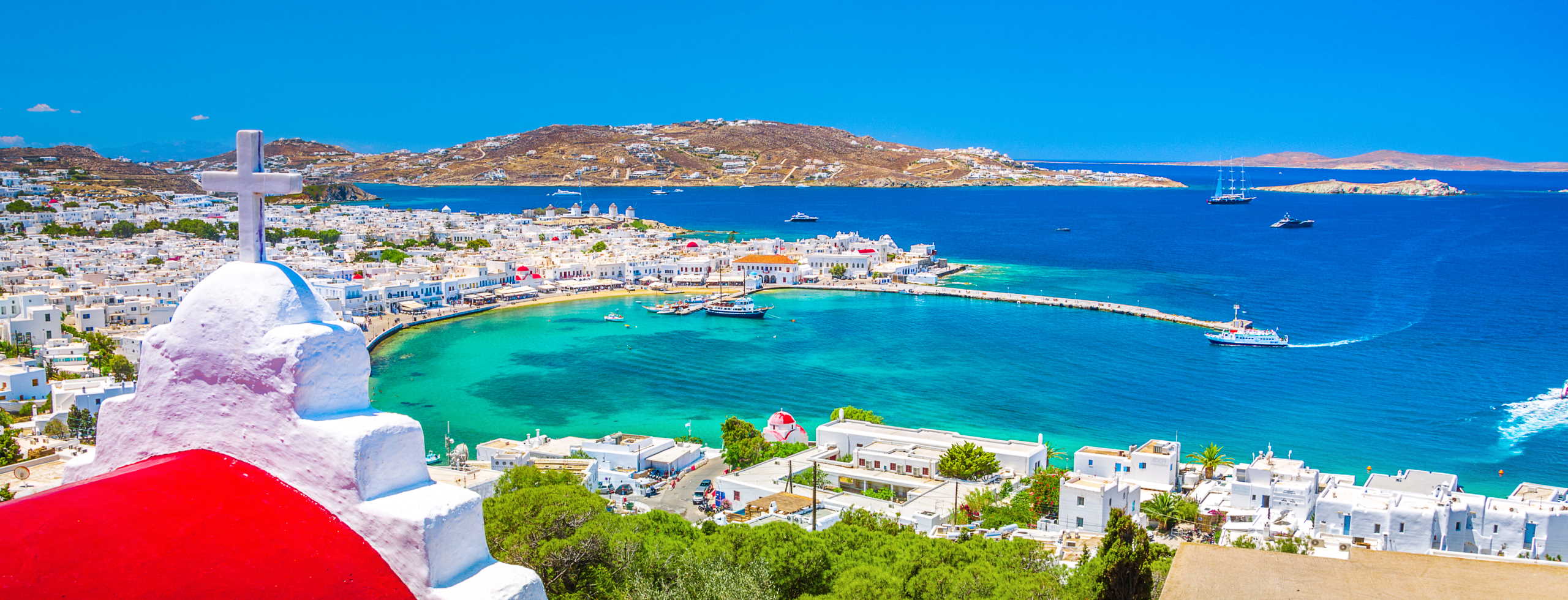-
Destinations
All Destinations
We'll craft an unsurpassed vacation just for you.
All you'll have to do is land
Choose your destination
- Pick your Trip
-
 Build your True Trip
Build your True Trip
- How It Works
- Blog
-

A Guide to Mykonos
by TrueTrips
- 1
MYKONOS THROUGH THE CENTURIES
Even though the island has been occupied since at least 3000 BC, it did not play a major role in the pre-classical world and was only ever important to the neighboring island of Delos as a place for gathering supplies and as a stopover during transit. By all accounts, Mykonos was a relatively poor island during antiquity.
Under Roman rule, Mykonos remained a back-water territory of little significance that was later incorporated into the Byzantine Empire until the early 1200s. After the fall of Constantinople at the hands of the crusaders, Mykonos was occupied by a Venetian nobleman by the name of Andrea Ghisi before being handed over to Venetian rule at the close of the 13th century. Mykonos remained under Venetian rule until the Ottoman Turks took over in 1537.
Under Roman rule, Mykonos remained a back-water territory of little significance that was later incorporated into the Byzantine Empire until the early 1200s. After the fall of Constantinople at the hands of the crusaders, Mykonos was occupied by a Venetian nobleman by the name of Andrea Ghisi before being handed over to Venetian rule at the close of the 13th century. Mykonos remained under Venetian rule until the Ottoman Turks took over in 1537.
Up until the end of the 17th century, Mykonos prospered as a center of trade and attracted a number of migrants from the surrounding islands. In 1821, the people of Mykonos joined the Greek Revolution under the leadership of anto Mavrogenous, a celebrated heroine who sacrificed her considerable fortune for the sake of the Greek cause, and in 1830 Mykonos became a part of the newly founded, independent nation of Greece.
Mykonos started on its path to international stardom in the 1970s, when it became a destination for a small coterie of “insiders” – artists and crafts people, vacationing Athenians, international jetsetters, and a growing gay community. Since then, Mykonos has developed into one of the most popular travel destinations in the Mediterranean and every year more than one million travelers flock to the island to enjoy a taste of its cosmopolitan atmosphere and extravagant lifestyle.
Mykonos started on its path to international stardom in the 1970s, when it became a destination for a small coterie of “insiders” – artists and crafts people, vacationing Athenians, international jetsetters, and a growing gay community. Since then, Mykonos has developed into one of the most popular travel destinations in the Mediterranean and every year more than one million travelers flock to the island to enjoy a taste of its cosmopolitan atmosphere and extravagant lifestyle.
